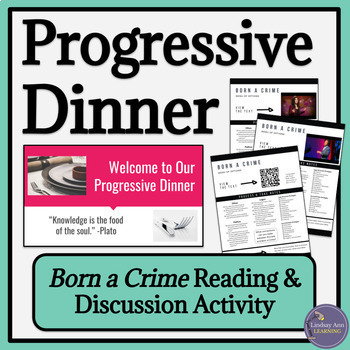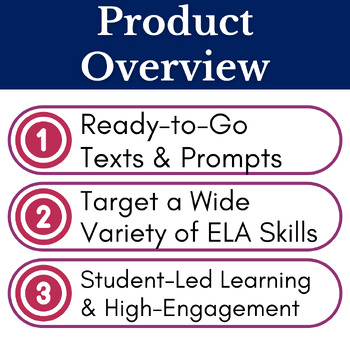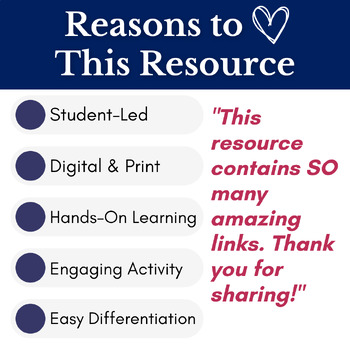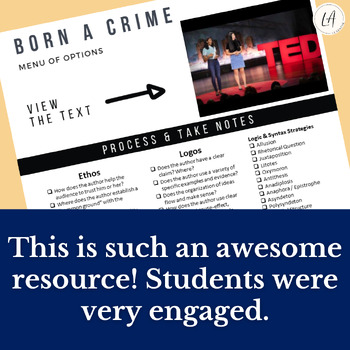Born a Crime Reading & Discussion Learning Stations Activity
- Zip
- Google Apps™

Also included in
- These digital resources make it easy to supplement the reading of Trevor Noah's Born a Crime! Facilitate text-to-text connections and reading of paired texts with fun learning stations, hexagonal thinking, and apartheid internet activities. ***********************************************************Price $10.50Original Price $15.00Save $4.50
Description
This fun Born a Crime learning stations activity "progressive dinner"™ asks students to view or read nonfiction and poetry texts that connect to Trevor Noah's Born a Crime. This fun reading stations activity is hands-on and interactive, a great way to spice up your unit!
I use this activity to help students make text-to-text connections and facilitate reading and discussion of supplementary texts for Born a Crime. There are 25 different text options to use at progressive dinner™ stations. Students rotate from station-to-station, taking notes on a paper plate. Before leaving for the day, they reflect on what they learned and, if you wish to extend their learning, they can use the "writing" menu of options for written response to the text(s).
*******************************************************************************
Here’s what you’ll receive in this resource:
★ Directions and Pacing Slideshow, Google Slides & PowerPoint Versions (one for use with paper plate handouts and one for use with actual paper plates)
(6 Slides x Two Versions) so that you're able to give students clear expectations for this activity and keep pace along the way. Feel free to customize directions and swap out timers for your own classroom use.
★ QR Code Dinner Menus (25 Pages)
★ Digital Dinner Menus (25 Google Slides)
★ Written Response Menu (1 Page; 1 Google Slide)
★ Customizable Dinner Menus (5 Google Slides) so that you're able to think of your own ways to use this resource and create menus to suit your tastes.
★ Dinner Plate Handouts (4 Pages) so that you don't have to purchase/use paper plates. Handouts accommodate space for student notes about 2, 4, or 8 different texts.
★ Product Links & Teacher Notes (4 Pages) so that you have instructions and tips for using this assignment with students at your fingertips.
★ Digital “Getting Started” Page (1 Page) so that you’re able to swiftly make your own copy of each digital product.
*******************************************************************************
This resource is helpful for:
★ Teachers who want maximum engagement in a student-led classroom.
★ Teachers who are looking to save time with ready-made resources.
★ Teachers who love to innovate and try new things!
*******************************************************************************
Let's Connect!
★ Stop by the Lindsay Ann Learning Blog!
*******************************************************************************
Copyright © 2019-Present, Lindsay Ann Learning
⇒ Permission for use by one teacher in his or her own classroom.
⇒ Not for public display or digital sharing.
⇒ If you intend to share with others, please purchase an additional license.






